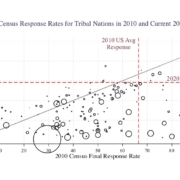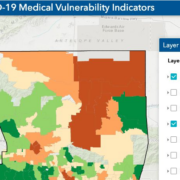California Neighborhoods and COVID-19 Vulnerabilities
Released earlier today, this new report by CNK consists of a series of policy briefs covering the social and economic impacts of COVID-19 on neighborhoods throughout California. The project focuses on identifying the broad vulnerabilities to COVID-19 and their disparities across neighborhoods in California. For this analysis, the census tract is the basic unit of analysis and serves as a reasonable proxy for neighborhood bounds. This analysis examines five dimensions of vulnerability across these tracts:
- Which communities have high numbers of renter households that are experiencing extreme financial hardships;
- Which communities are most at risk from job displacement in the hospitality, retail, personal care, and service sectors;
- Which communities are at risk due to a disproportionate high percentage of residents not enrolled in Unemployment Insurance benefits;
- Which communities are most burdened by shelter-in-place mandates; and
- Which communities are likely to be unrepresented in the 2020 Census due to low response rates.
For more information about each indicator, see the full report here: California Neighborhoods and COVID-19 Vulnerabilities
To access the statewide maps for these indicators, visit the following page: https://knowledge.luskin.ucla.edu/ca-renter-vulnerability/








 https://census.lacounty.gov/census/
https://census.lacounty.gov/census/ 


Leave a Reply
Want to join the discussion?Feel free to contribute!